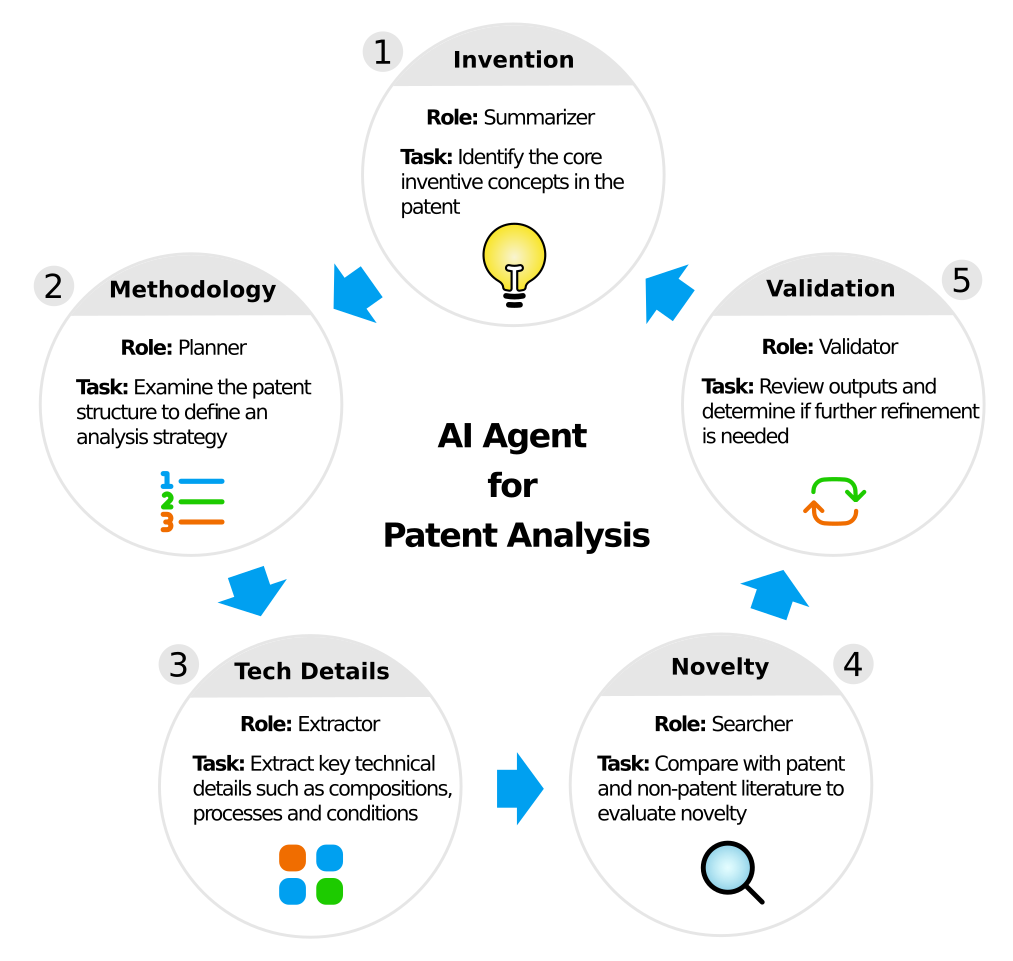AI Agent for Patent Analysis — An Example
Published on April 21, 2025 — 3 min read
Have you heard the buzz around AI agents but wondered how they actually work and what they can do for your R&D? In essence, agent is about breaking up a complex task into smaller, manageable steps, and using AI to help with each piece. These "agents" typically leverage Large Language Models (LLMs), which enable them to operate autonomously and even invoke external tools and databases to solve complex problems.
As AI agents are powered by language models, they excel at language-based tasks, such as information discovery, text extraction, and Q&A. In combination, these capabilities can be harnessed to tackle R&D tasks such as patent analysis. The AI agents can sift through patent collections for protocols, material disclosures, and key claims, helping scientists avoid infringement, redundant work, wasted resources, missed opportunities, and competitive blind spots.
Both commercial and open‑source AI‑agent solutions for patent analysis already exist, and EvoPat (EvoPat: A Multi-LLM-Based Patents Summarization and Analysis Agent, Wang et al., 2024) is one such example—an AI agent to perform patent summarization and analysis. Building on the EvoPat concept, the diagram below illustrates an example agent framework for patent analysis. Let’s dive into it.

-
Invention Summarizer: Distills lengthy patent documents into concise overviews, highlighting the core invention(s) and setting the stage for deeper analysis.
-
Methodology Planner: Crafts a bespoke analysis roadmap—drawing on patent type (composition, process, use, etc.) and document structure—to focus subsequent agents on the most meaningful sections and claims.
-
Tech Details Extractor: Pulls out relevant technical specifics—materials, formulations, process steps, operating conditions—to enable precise technical understanding and evaluation.
-
Novelty Searcher: Surveys patent and non‑patent literature to assess overlaps or distinguishing features, contextualizing the patent within the broader innovation landscape.
-
Validator: Reviews and integrates all agent outputs, checking for coherence, accuracy, and completeness, and triggers iterative refinements as needed.
At this point, you may be thinking: “Why bother with a multi-step agent setup—can't ChatGPT handle all of this?” In practice, an agentic workflow is more effective for two main reasons:
-
Deeper Analysis: Orchestrated by the methodology planner, each agent focuses on a specific task, yielding richer, more granular insights.
-
Predictability & Robustness: Specialized agents are simpler to maintain, update, and troubleshoot, and the workflow ensures more predictable output.
In summary, AI agents use a systems‑thinking, divide‑and‑conquer approach built on LLMs to link specialized modules into a seamless workflow. They have the potential to automate tedious R&D tasks, freeing scientists to focus on genuine innovation. Based on the example outlined here, a working prototype is now under development and will be released soon.
- AI AgentGenerative AILanguage ModelsPatent